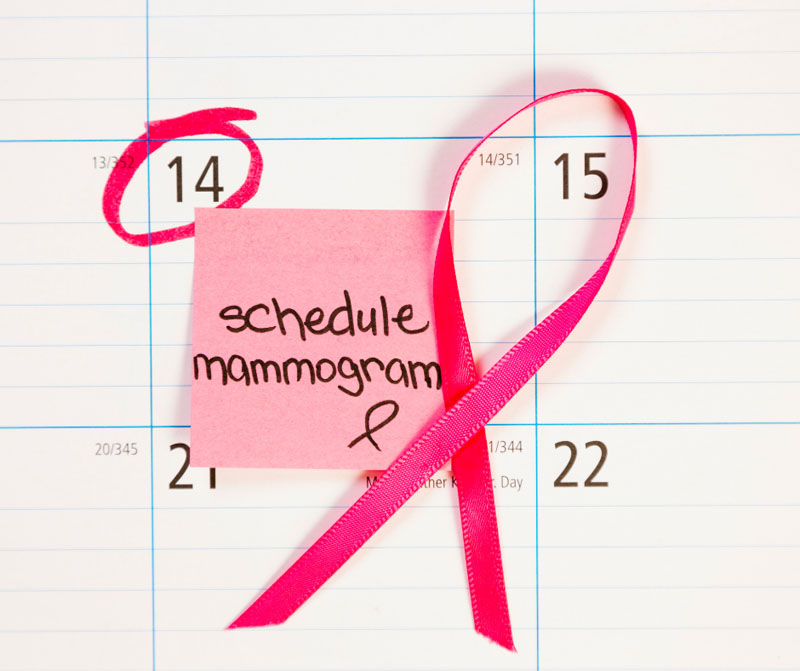An annual mammogram is essential to your healthcare routine if you’re a woman ages 40 or older. Screening mammograms are X-rays of the breasts that offer several benefits for your health and everyday life.
1. Annual Screening Mammograms Are an Opportunity for Self-Care
It’s easy to get busy with day-to-day responsibilities and neglect important aspects of self-care, especially if you’re taking care of children or an elderly relative. However, caring for your physical and mental health is crucial to living your best life.
Screening mammograms are an essential, regular self-care practice. Taking less than an hour out of a year to ensure your breasts are healthy can help you stay in good health and address any concerns early on. Plus, building healthy habits, establishing consistent self-care routines, and prioritizing your health and well-being can help you:
2. Detect Issues Early
Mammograms identify abnormal areas within the breasts and changes in breast tissue since your last mammogram. However, a mammogram alone cannot detect if you have breast cancer.
If you have dense breast tissue, you may also benefit from having a screening breast ultrasound along with your screening mammogram. The breast ultrasound helps find areas otherwise obscured on a mammogram due to dense tissue. The tests complement each other and give the radiologist the information needed to detect breast cancer.
Abnormal findings in a screening mammogram may also be signs of a benign (noncancerous) condition or a false positive. A false positive is a result that appears abnormal but is determined to be normal after more imaging or testing.
If your screening mammogram shows an abnormal area or an unclear image, you will be called back for additional imaging, such as a diagnostic mammogram or ultrasound, or a breast biopsy. Getting more information about abnormal areas may be stressful, but it’s also very helpful regardless if cancer is found. This information can not only help you get early treatment for breast cancer, but it can also provide helpful information about benign breast conditions that may increase your risk of developing breast cancer.
Breast cancer is typically easier to treat when detected early. Detecting cancer at its earliest stages can mean less invasive treatment methods and a greater chance of keeping your breasts. Five-year survival rates are also higher the earlier cancer is detected. When breast cancer is found before it spreads, the 5-year survival rate is nearly 100%. If the cancer spreads to nearby lymph nodes, the survival rate is about 86%. If breast cancer spreads to other body parts, the survival rate drops to 31%.
3. Screening Mammograms Provides a Baseline
Breasts come in many shapes, sizes, and densities. Many women — around half — who receive mammograms have dense breast tissue, while others have a higher percentage of fatty tissue in their breasts. Changes in breast density are common over time. Annual screening mammograms help your healthcare provider know what’s normal for you, allowing them to recognize changes or potential areas of concern more quickly.
Since a first mammogram screening helps to establish a baseline, it can be more likely that you are called back for further testing after an initial mammogram. This means that providers have more information about patients who have established their baseline breast health with annual mammograms.
4. You Can Be a Positive Role Model
When you prioritize your health and make time for annual screening mammograms, you set a positive example for other women and girls. If your daughter, niece, or another young woman in your life sees you setting aside time for a breast health screening, they may be likelier to do the same in the future. Similarly, a friend, sister, or other relative may be encouraged or less nervous about getting a screening mammogram if they know you’ve had one.
5. Annual Screening Mammograms Put Your Mind at Ease
While there is a possibility a screening mammogram may detect a concern, not knowing your breast health status may cause more stress. Receiving a normal mammogram report showing no breast health concerns can put your mind at ease.
If your screening mammogram is abnormal, it does not mean you have breast cancer. Instead, it means that your provider will probably recommend a diagnostic mammogram or other testing to get more information. It’s normal to be worried if you’re called back. Still, fewer than 1 in 10 women who need additional testing after a screening mammogram are found to have breast cancer.
If breast cancer is detected, finding it early through a screening mammogram can help you get the care you need as soon as possible, improving your chances of successful treatments and reducing the need for aggressive treatments. Early detection through a screening mammogram often means less energy, stress, and time spent receiving care, and more energy and time for those you love, including yourself.
Schedule a screening mammogram with a Windsong breast imaging expert.







